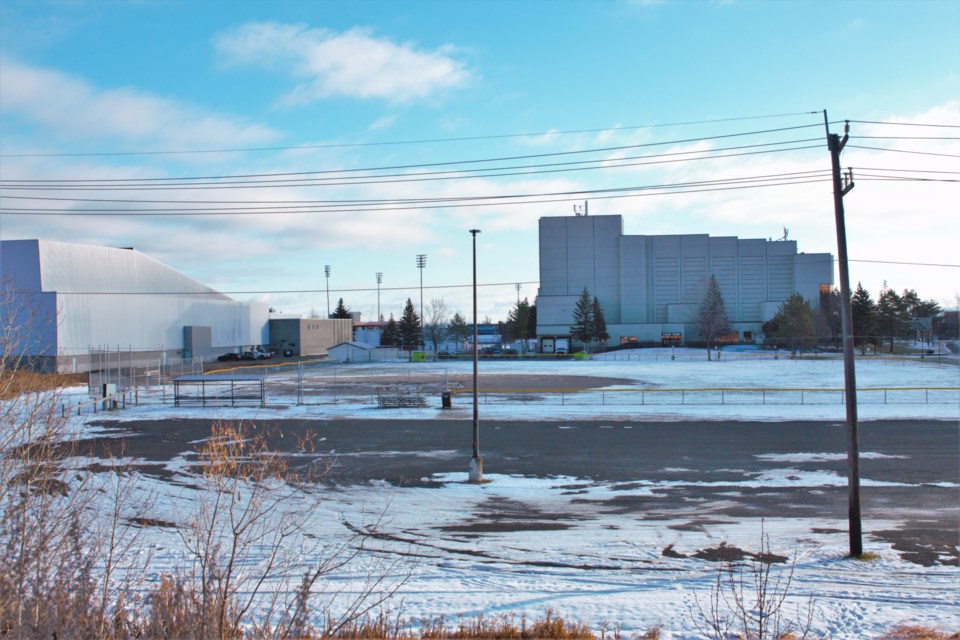THUNDER BAY — City council’s years-long search for a way forward on a proposed indoor turf sports complex took another turn Monday, as councillors approved steps that could rule out starting a build in 2024.
The facility’s largest potential user group, Soccer Northwest Ontario (SNO), expressed incredulity and frustration at the move, warning it could cause further cost increases.
Steps council approved Monday, including ordering further consultation with users that SNO called redundant, will delay the project by a minimum of four months, city staff estimated.
That would push a best-case scenario for awarding a contract for the project back from July or August 2024, had council proceeded with administration's recommended course of action on Monday.
That process is expected to allow companies to propose designing and building, as well as operating and maintaining, the facility, in a bid to limit public investment.
"We’re pushing this back potentially a year, past the building season” in 2024, warned Coun. Trevor Giertuga.
Coun. Shelby Ch’ng expressed frustration with the prospect of further delays, saying the city was "burning social capital we no longer have" with user groups, which include soccer, cricket, Ultimate Frisbee, and football organizations.
“They’re done with surveys, they’re done with questionnaires,” she said. “I can’t put this community through this anymore. I want an answer tonight, so I can go back to those 4,000-plus people, those kids, and say we are actually doing something — because nine years is too long.”
The groups have already been asked to narrow the scope of the facility, trimming off amenities like showers, meeting and storage space, and a walking track, she said.
Soccer Northwest Ontario president Michael Veneziale echoed that point, saying after years of indecision and false starts by council on the project, many users are fed up.
“Our user groups have absolutely no faith in this process anymore,” he said.
He noted users had already been consulted on minimum requirements for the facility and pitched their own proposed design for the project, questioning what more the city could learn.
Council rejected administration’s recommended financing plan for a facility next to the Thunder Bay Community Auditorium, which outlined how the city would pay for a $44.5-million facility, without binding council to spend those dollars.
Including the costs of debt servicing, that plan was estimated to cost the city $55 million over 25 years.
Instead, council approved a motion from Coun. Mark Bentz to cap construction costs for the project at $30 million, not including some site investigation and design costs.
The motion directs administration to consult with users on how to “re-scope” the project to that cost, to retain Stantec Architecture to consult on further required studies and potential designs, and to return by March 24 with a recommended procurement process.
Council initially rejected Bentz’s motion after staff said it would delay the city’s ability to launch a competitive bidding process by several months.
However, after hearing from clerk Krista Power that would leave the project “essentially dead” without an alternate resolution, council held a re-vote, reluctantly approving it.
Power told council it could not simply vote to amend the financing plan to $30 million without further steps, since the city’s estimates indicate the preferred design can’t be built that cheaply without modifications.
Giertuga questioned that logic, responding, “I’m not convinced we can’t build something there for $30 million” despite administration’s numbers.
The $44.5-million figure comes from a Class C estimate prepared by consultant Hanscomb Ltd. and considered accurate within 15 to 20 per cent.
It’s based on a hangar-like steel-sided design proposed by Soccer Northwest Ontario a year ago, upgraded to meet city building standards and the LEED Silver environmental standard at council’s direction – a compromise that falls short of the city’s net-zero climate goals.
Veneziale said he supports capping the build price around $30 million, a benchmark he believes the private sector can meet if given the leeway to do so.
He has publicly questioned the estimates presented by administration, and joined several councillors in zeroing in on the inclusion of nearly $13 million in “allowances.”
That include room for inflation through 2025, assuming the build won’t start until then, as well as a 10 per cent allowance to cover “design and pricing unknowns” with the Class C estimate, and a further construction allowance “based on the complexity of the project.”
Those come on top of what Hanscomb pegged as a $27.7-million base building cost, and $3.2 million in site and ancillary work.
Veneziale strongly objected to council’s direction to consult with users to re-scope the design.
As well as causing what he called unnecessary delays, the soccer leader worries basing the process on administration's estimates could see staff returning with a recommendation to shrink the building to less than full field size.
He said he's calling on administration to share the full details behind its estimate, which he hasn’t yet seen.
Until that happens, Veneziale said he considers administration's estimates "fictitious numbers."
Monday’s meeting also revealed further geotechnical and environmental assessments are needed on the Auditorium site before the city launches a procurement process.
While staff said no red flags had emerged in preliminary testing, that involved drilling only two boreholes, and more would be needed to confirm the results.
That work is estimated to be complete in January.
